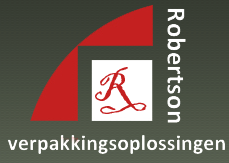With circular economy in mind and PPWR (Packaging & Packaging Waste Regulation) as guideline a packaging review is possible and will show some important data to think off.
PPWR listed nine topics, in this blog the focus is on the first three tropics.
- Reduce
- Reuse
- Recycle
Concerning the management of packaging and packaging waste should be harmonized in order, on the one hand, to prevent any impact thereof on the environment or to reduce such impact, thus providing a high level of environmental protection. [1]
The management of packaging and packaging waste should include as a
- first priority, prevention of packaging waste and,
- as additional fundamental principles,
- reuse of packaging,
- recycling
and other forms of recovering packaging waste and, hence, reduction of the final disposal of such waste. [1]
With above knowledge, an exam or review, per product group is possible.
Focus of today, the plastic Meat Tray packaging:
REDUCE
The last years, Material thickness reduction is realized. Also the most meat trays are made from a mono material for better recycling. However to have enough protection during the shelf life of the product and avoid meat waste, a minimum material thickness is required to avoid transfusion of oxygen, and water vapor to the product. After filling the trays and before closing the oxygen will replaced by a natural gas such as carbon dioxide or nitrogen, to avoid product deterioration.
Material thickness reduction is limited by using mono materials and in the margin, there are maybe small adjustments possible.
Each packaging has a specific amount of material usage. However it will be nice to see if it is possible to bring shelf life of the meat (approx. 8 – 10 days) more aligned with packaging material shelf life (>approx.. 100 year). A new packaging material or system is required to reduce more packaging material.
Reuse
Reusing of the current tray is irrelevant. The plastic meat trays are use one time, which is a pity, because plastic have a long shelf life. Reusing plastic meat trays will be very complex off food safety.
RECYCLE
The meat trays made of PET are able to recycle and reuse as r-PET material in food packaging. PP trays are also recyclable but r-PP is not allowed to reuse as r-PP in food packaging. However programs like @filigrade are very useful by increasing and reusing the recycled content.
Consideration:
What will be the consequence if the retail introduce a butcher in the shop.
More employees on the shop floor, but less pre packed products. Supply chain is shorter, but the shop needs to invest in cooling and freeze capacity. Is this a solution or generate it more problems, costs and even food waste?
If we like to reuse the mead tray, what kind of opportunities do we have?
These questions are not simple to answer, it cost time to answer the dot on the horizon. It is not a question if the chain will change, but the question is how will the chain change in the future.
A reduction of mead consumption itself is not a solution, because products made of plant based as vegetarian meat are using the same packaging and therefore have the same issues.

